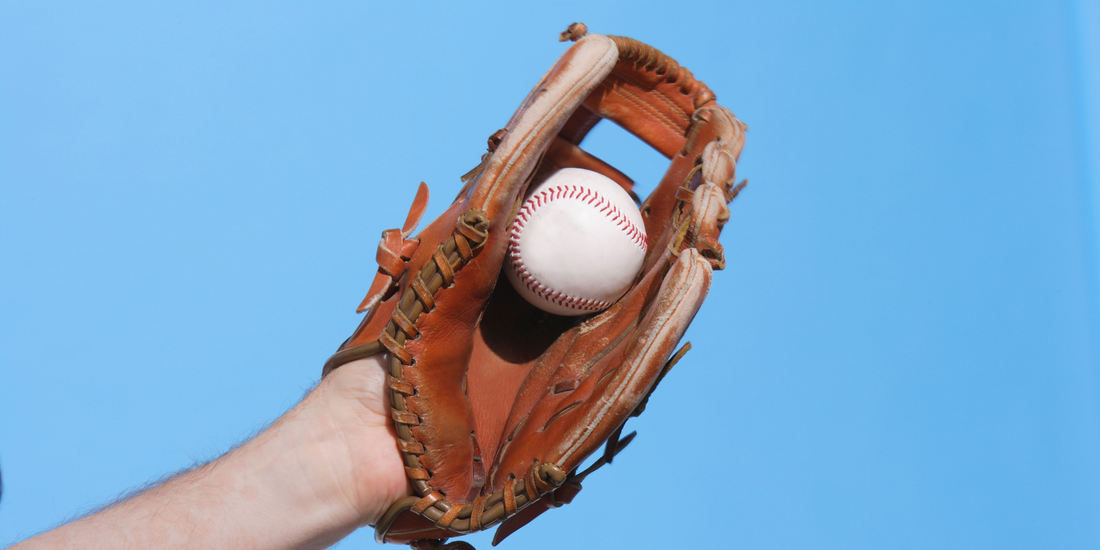
Baseball has been the U.S. national pastime for more than a century. It's a lot of fun to play, but injuries can happen from things like wild pitches, batted balls, and collisions on the field.
These safety tips can help protect you while playing baseball.
Staying Safe & Preventing Injuries
To play your best, it’s important to take steps to stay safe. Learn about the best gear for baseball and what to do on and off the field.
Do I Need to Wear Safety Gear to Play Baseball?
Wearing and using the right gear can help prevent injuries. Safety rules for most leagues include using:
Batting Helmets
Batting helmets must be worn whenever a player is at bat, waiting to bat, or running the bases. Some leagues may even require pitchers to wear them. Helmets should always fit properly and be worn correctly. If the helmet has a chin strap, it should be fastened. If it has an eye shield or other face guard, this should be in good condition and securely attached to the helmet.
Baseball Cleats
These shoes should have molded plastic cleats (spikes) on the soles rather than metal ones to help grip the ground. Most youth leagues don’t allow metal cleats.
Baseball Glove
Make sure it’s the right size and broken in to make fielding the ball easier. Ask your coach if you’re not sure how to loosen up your glove.
Baseball Bats
Bats should meet the standards of the league and have a USA Baseball logo on them.
Catcher’s Gear
There’s certain gear that catchers should wear when they catch pitches during warm-ups, in the bullpen, or during a game. A catcher should always wear a helmet, face mask, throat guard, full-length chest protector, shin guards, and a catcher’s mitt.
Other Gear
Some baseball players wear extra protection when batting, like a mouth guard and batting gloves that can keep hands from getting sore while hitting. Shin guards and foot guards can protect players against a foul ball that goes straight down off their bat and hits their leg or foot. Some players wear sliding pants or shorts that go under baseball pants to help prevent scrapes and cuts.
An athletic supporter with a cup can help prevent injuries to the testicles. It’s especially important for pitchers, catchers, and infielders to wear protective cups. A sports bra can provide comfort and support.
How Can I Stay Safe at Practices and Games?
From warming up to knowing when to stop playing, these habits can help keep you safe.
Getting Ready to Play
Before starting the season, get a sports physical. Your doctor can check for any health problems and talk about sports safety. Most schools won't let athletes play unless they've had a sports physical within the past year. Plus, being in good shape can help you avoid injuries.
It’s also important to warm up and stretch before playing. Learn the rules of the game and use proper techniques — like how to slide the right way.
Playing different sports throughout the year can help prevent repetitive stress injuries (overuse injuries), which happen when someone trains too much or repeats the same motions.
Staying Safe on the Field
If you feel pain or get hurt, stop playing. You’ll need to get checked by an athletic trainer, coach, doctor, or nurse before going back on the field. Since you’ll be outside, protect your skin by wearing sunscreen with an SPF of 30 or higher and a hat. Staying hydrated is also important (especially on hot, sunny days) so drink plenty of fluids before, during, and after practices and games.
Avoid Injuries When Pitching
Too much pitching can lead to serious injuries, whether you’re throwing balls on the field or into a baseball net. These guidelines can help keep you safe:
- Avoid pitching if your throwing arm hurts.
- Follow league rules for the maximum number of innings pitchers are allowed to throw.
- Stick to the pitch count limits recommended by U.S.A. Little League and the American Sports Medicine Institute:
- 11–12 years old: 85 pitches a day
- 13–16 years old: 95 pitches a day
- 17–18 years old: 105 pitches a day
- After pitching a game, follow the rules for how many days to rest. While it might be a bummer to not pitch, the rest rules are there to prevent elbow and shoulder injuries that could keep pitchers on the bench much longer.
- Take at least 4 months off each year from overhead sports (ones that involve a lot of overhead arm movements, like baseball or volleyball), with at least 2–3 of those months being in a row.
- Avoid pitching for more than one team at a time. When not pitching, don’t play catcher since that requires overhead arm movements.
Play Fair and Stay Calm
Coaches should encourage safe and fair play. Be a good sport. Respect the umpire and avoid arguing with calls. If you think a player on the other team is trying to hurt you on purpose, stay calm and tell your coach and the umpire, then let them handle it.
The field should be in good condition and have breakaway bases (bases that can move if someone slides into them).
Source: Baseball safety tips | Nemours KidsHealth. (n.d.). https://kidshealth.org/en/teens/safety-baseball.html

